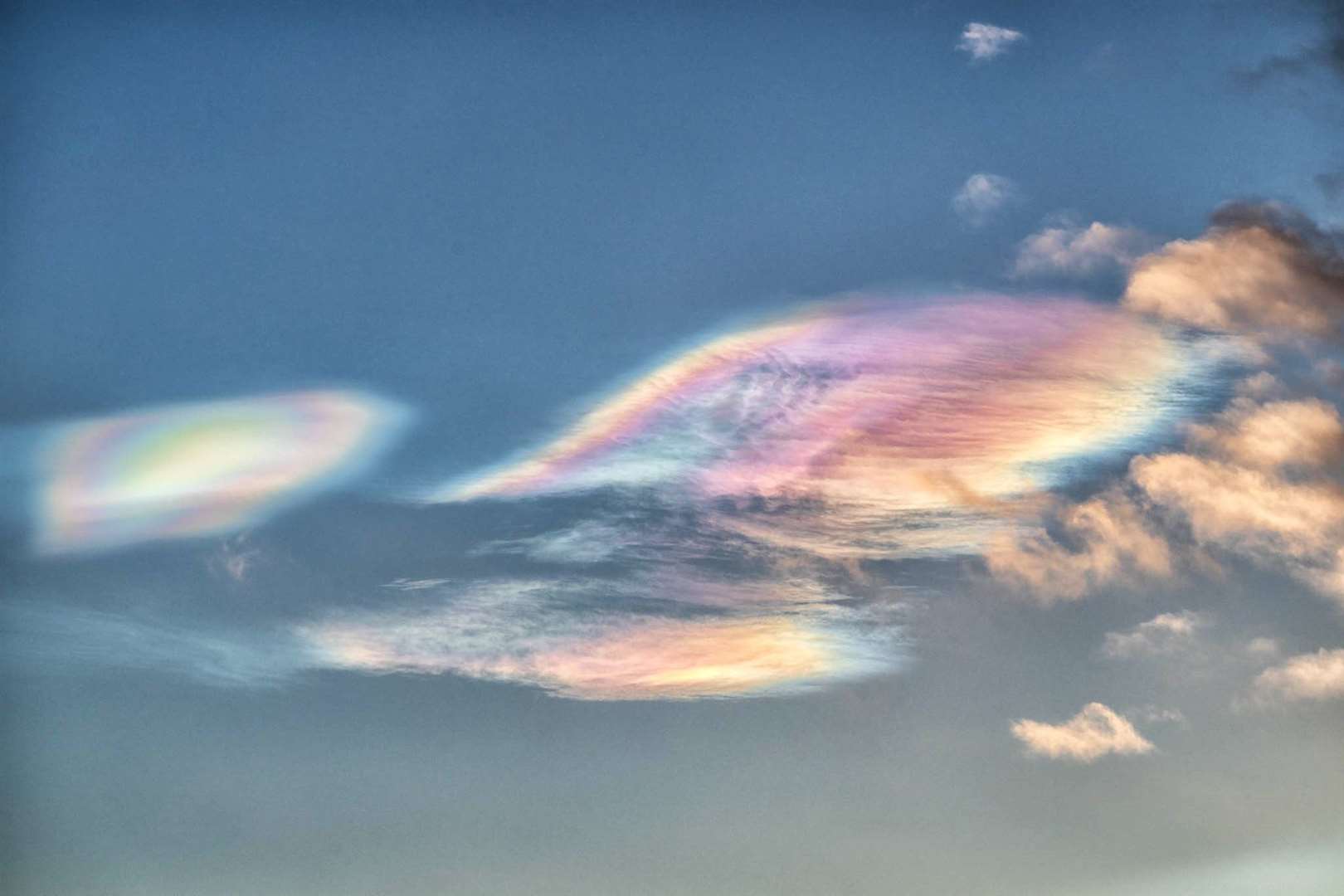Spectacular Christmas Eve cloud show across Caithness could have negative consequences
Register for free to read more of the latest local news. It's easy and will only take a moment.
A colourful display in the sky across Caithness and the far north Highlands had residents reach for their smartphones and cameras to capture the weird phenomenon on Christmas Eve.
The low winter sun on Sunday provided ideal conditions in parts of the north, for those at the right latitude, to see these rare nacreous clouds which are unfortunately connected to depletion of Earth's protective ozone layer.
Local weather watcher Keith Banks said: "There are spectacular atmospheric phenomena that are not caused by weather conditions in the troposphere – the layer of the atmosphere closed to the Earth's surface. Arguably the most stunning of these are the manifestation of nacreous clouds. These are also known as 'mother of pearl clouds', from their pronounced iridescence.
"The most vivid colours occur when the Sun is just below the horizon at sunset and sunrise. The technical name for nacreous clouds is 'polar stratospheric clouds' [PSCs], and this reveals more about the nature of these rare clouds.
"In brief, nacreous clouds are composed of tiny ice crystals that 'diffract' and subsequently 'refract' the Sun's rays, and it is those physical processes that produce the stunning colours."
Keith added that, in spite of their beauty, these nacreous clouds are regrettable associated with processes that lead to the destruction of protective ozone present in the stratosphere.
"In very brief terms, the occurrence of these nacreous clouds above Caithness has arisen because of the polar vortex that has recently shifted temporary towards NW Europe.
"This has resulted in the air located above the temperate latitudes at altitudes of between 70,000 and 100,000 feet [approximately 13-19 miles] above the surface of the British Isles being unusually cold [below minus 83C], and thus creating the optimal conditions in the lower part of the stratosphere for the genesis of so called Type 2 nacreous clouds."
The phenomenon was seen across much of the north Highland region with a report posted in our sister paper the Ross-shire Journal.
Gavin Pretor-Pinney, founder of the Cloud Appreciation Society, says that lower average winter temperatures in the upper atmosphere may explain why nacreous clouds seem to be appearing with increased frequency and distribution.
"The general increase in observations of these clouds is considered by some scientists as linked to man's contribution to global warming," he added.
















